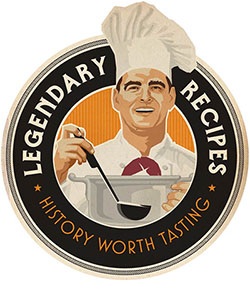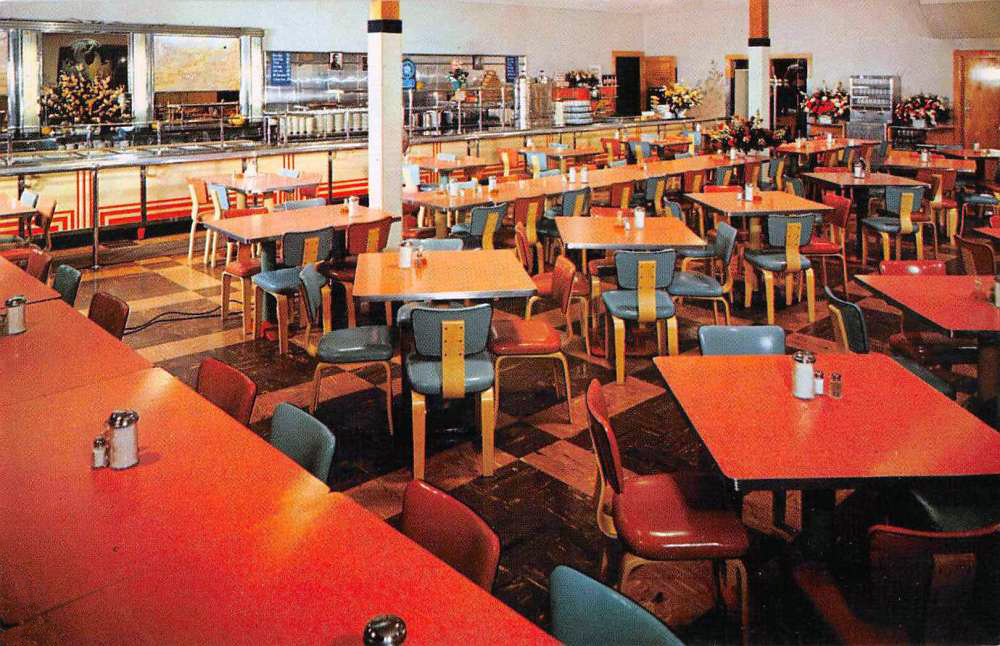In 1916 Jack Mangas managed to make his way to America from the tiny village of Vordonia in southern Greece, a picturesque but poverty-stricken community at the base of Mount Taygetus. He had no knowledge of the English language and just $25 in his pocket. His destination was Elyria, Ohio, where, joining the relatives who had sponsored him to come and stay in the United States, he began working in an uncle’s candy and ice-cream shop. Mangas apparently learned the business so well that in just a few years he was able to open his own shop in New Albany, Indiana, a thriving city on the Ohio River just across from Louisville, Kentucky.
In 1922, just a few years after the end of World War I, Mangas was joined by his younger brother Jack, who’d left Greece with just $10 in his pocket. But the brothers grew restless in New Albany and began thinking about getting a fresh start elsewhere. One day a traveling salesman recommended Elwood, Indiana, some 150 miles or so due north, roughly halfway between Louisville and Chicago, with a passenger and freight depot operated by the Norfolk and Western Railway.
In 1928 the two brothers settled on Elwood as an ideal location for their new business and opened the Elwood Sweet Shoppe at 110 South Anderson Street, with George making the ice cream and Jack making the candy. For seven years they poured everything they made back into the business, which, despite the economic hardships of the Great Depression, was hugely successful.
With the end of the Great Depression the Mangas brothers began thinking of building something bigger in Elwood. When they learned that Edward and Joseph DeHority were rebuilding a burned-out business complex on the corner of Anderson and Main Streets, they approached the other brothers about taking the lion’s share of space in the new building for a new cafeteria. This was not to be just any cafeteria, the Mangas brothers said, but a “super cafeteria” that could accommodate 150 patrons or more at a time.
The Mangas Cafeteria opened on November 14, 1941. It was ultramodern outside and in, with lots of stainless steel and chrome, a 42-foot counter along one side, and brightly colored Formica-topped tables. The average lunch was 75 cents, dinner $1. A slice of pie was 10 cents, and there were many varieties to choose from, including peach, raspberry, gooseberry, and a “mile high” lemon meringue. (The Mangas brothers would keep the Elwood Sweet Shoppe open until 1948.)
A month or so later, following the Japanese attack on the U.S. naval base at Pearl Harbor, the cafeteria began offering free meals to those who donated blood, bought war bonds, or served overseas. And throughout the war the Mangas brothers, who were both beyond the age of service, backed the U.S. war effort in any way they could think of. They gave a free dinner for two to anyone who bought a $50 war bond, and in 1944, eight days after D-Day, they hosted an “Invasion Banquet” in the cafeteria. “Back the Attack,” their newspaper ads for the event said. “The purchase of a $100.00 war bond is your admittance!” (In future years, whenever uniformed service members or veterans who had served overseas came into the cafeteria, George Mangas, who manned the cash register, would not allow them to pay for their meals. “You served our country,” he’d tell them. “We’ll serve you.”)
In 1942 the Mangas brothers expanded the cafeteria by adding an annex to the side of the building. It featured scenic paintings by Ben Baker, a well-known Elwood artist. After the war they completely remodeled the inside, and in 1958 they expanded the cafeteria once again by adding the “Grecian Room” to the north side of the building. By now it could seat 400.
The Mangases closed the cafeteria every Wednesday so that they could travel to restaurants around Indiana to get ideas, visit with the owners, tour the kitchen facilities, and swap recipes. And on March 25 every year, the Mangas Cafeteria celebrated Greek Independence Day with authentic Greek dishes and music. And there were plenty of personal touches as well. The Mangases offered high-school graduates a free dinner or a large chocolate bar, and when parents came into the cafeteria with a new baby, the Mangases would give them a shiny silver dollar. Newly married couples could stop in for a complimentary meal, too, and George, who typically manned the cash register, handed every child leaving the cafeteria a tiny box containing two Chiclets. (He also loved to prank patrons with a couple of plastic ketchup and mustard bottles, loaded with red and yellow string, that he kept near the register, squeezing one of them to squirt a fake stream of the chosen condiment at his intended target.)
In 1976, after 48 years in business in Elwood, Jack and George Mangas, and their wives, decided to retire, turning the cafeteria operations over to Jack’s daughter, Georgia Skalkotos, and her husband, Nick. (Jack retired to Florida and died the following year at age 77.) The Skalkotoses kept the family cafeteria going until 1987, when Georgia decided to sell it to Forest Crawford. “It just struck me to buy it,” Crawford later recalled of his spur-of-the-moment decision, made when he and his wife started talking about the impending close of the cafeteria and decided to stop there to eat <on a trip to Ellwood for a church bazaar. Crawford remodeled and enlarged the cafeteria’s Grecian Room, turning it into Crawford’s Food Store, open 24 hours a day. The new business, however, never took off. “My idea was the grocery store and cafeteria would help each other, but it didn’t work out,” Crawford told a reporter for the local newspaper, saying that he aimed to sell the property. “I would have sworn it was a moneymaker….Obviously, it is not wanted or needed.” The Mangas Cafeteria closed December 11, 1988, and Crawford put it up for sale.
But soon the Mangas Cafeteria found a potential savior in Jerry Gillem, the owner of the Filling Station Tavern in nearby Kokomo, who bought the cafeteria from Crawford on contract for $300,000 and rehired its manager and cooks. Gillem had been in the restaurant business since 1958, when he introduced Kokomo to carryout pizza. The Mangas Cafeteria reopened March 3, 1989. Gillem had grand plans, saying that he wanted to expand it to hold more than 1,000 people. If he could get federal funding through the city, he said, he would combine the cafeteria with a vacant market that he also owned and turn the whole complex into a community center.
Things, however, didn’t work out that way. The Mangas Cafeteria closed for good on July 30, 1991, with Crawford telling reporters that Gillem had not been able to make payments on the property for the preceding six months.
In 1993 the building that for more than 50 years was home to the Mangas Cafeteria was demolished to make way for a new Hook’s drugstore. (It’s now a CVS Pharmacy.) Members of the Mangas family had paid the cafeteria a final visit before the demolition crew got started, and as the walls came down people plucked bricks and other objects from the rubble to keep as souvenirs.
George Mangas died in 2000 at age 97. Friends and other mourners passing by the casket at his memorial service were greeted with a basket full of the familiar little Chiclet boxes.
Famous Patrons of Mangas Cafeteria
- Mario Andretti
- Robert F. Kennedy
- Wendell Willkie

Pecan Pie
Ingredients
- 4 eggs, well beaten
- 1/2 cup granulated sugar
- 1 1/4 cup Karo light corn syrup
- 1 (9-inch) pie shell, unbaked
- 2 cups pecan halves
Instructions
Heat the oven to 350 degrees. Place a rimmed baking sheet on the center rack of the oven while heating.
Using a spoon, mix together the beaten eggs, sugar, and Karo syrup.
Pour the mixture into the unbaked pie shell and top with the pecan halves.
Carefully place the pie on the preheated baking sheet in the 350-degree oven and bake for until done, 60 to 70 minutes (see tips for doneness, below).
Cool the pie for 2 hours or overnight on a wire rack before serving.
Notes
The pie is done when the center reaches 200 degrees. The center surface of the pie should spring back when tapped lightly. If the pie crust is overbrowning while cooking, cover the edges with foil.










No Comments